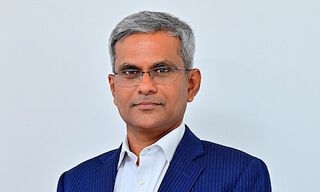Although digital banks have sprung up in recent years, their efforts to address the unbanked appear limited at the moment. Celeste Goh, a fintech analyst at S&P Global Market Intelligence, shares her observations with finews.asia in an interview.
Digital banks have attempted to address key constraints faced by the unbanked population but they are not casting a wide net, according to S&P's Global Market Intelligence report «Big banks gaining a head start in Southeast Asia's digital banking race.»
In other words, while these digital banks are not excluding the unbanked, they appear to be focusing their resources in major cities, says Celeste Goh, Fintech Analyst at S&P Global Market Intelligence. The account opening process at most digital banks, for instance, favors urban dwellers.
Serving Mainly Urbanites
For example, United Overseas Bank, which launched TMRW in Thailand, has placed its identity verification kiosks or agent meetup locations only in Greater Bangkok, while CIMB Group Holdings' OCTO has such kiosks and locations in Hanoi and Ho Chi Minh. Only digital banks targeting Indonesia cover slightly m0re cities – DBS Digibank placed its kiosks and agent meetup locations in Greater Jakarta, Bandung, Surabaya, Medan, Semarang, Jogya.
«These digital banks may be choosing to focus their efforts in urban areas possibly because rural areas have lower internet penetration. In Indonesia for example, 38.4 percent of people living in rural areas do not have internet access, while the offline population in urban areas stands at 25.9 percent, according to a 2018 survey by the Indonesian Internet Provider Association,» explains Goh in an interview.
Physical Venues Still Used for Onboarding
Although bank account registration can be initiated in-app, only CIMB Bank Philippines and Jenius in Indonesia permit an end-to-end remote account-opening experience through features such as selfie verification and video calls to confirm the users' identity. For other banks, identity authentication is still required at physical venues, though some have streamlined the process by introducing biometric technology.
This may explain why most digital banks attempt to operate alongside their parents' branch-based banking services in those countries. «At UOB's TMRW bank in Thailand and DBS Digibank in Indonesia, customers are required to visit a biometric verification booth with their identity card to complete their application, though this process can also be completed through agents for DBS users based in greater Jakarta, Indonesia. In Vietnam, where electronic know-your-customer laws are lacking, face-to-face verification is required,» writes Goh.
Key Constraints
To improve the financial inclusion figures in their own countries, regulators across Southeast Asia are warming up to the idea of virtual banks – Singapore and Malaysia are preparing to open the banking industry to digital players while the Philippines and Thailand expressed interest in developing virtual banking frameworks.
The inability to maintain sufficient money to use an account was the top reason reported by survey respondents in Indonesia, the Philippines, and Vietnam for not having a bank account, according to a 2017 survey conducted by the World Bank. Costly financial services and the lack of proximity to financial institutions were also highlighted as key constraints.
Some Way to Go
«Digital banks attempted to address some of these issues by offering no-fee savings accounts without a mandated minimum balance, though dormant accounts may incur charges. A slew of core financial services such as cash withdrawals and domestic fund transfers to other banks have been made complimentary,» Goh notes.
However, such innovations and agent verification services are still primarily located in major cities, limiting banks' reach in rural communities.


























